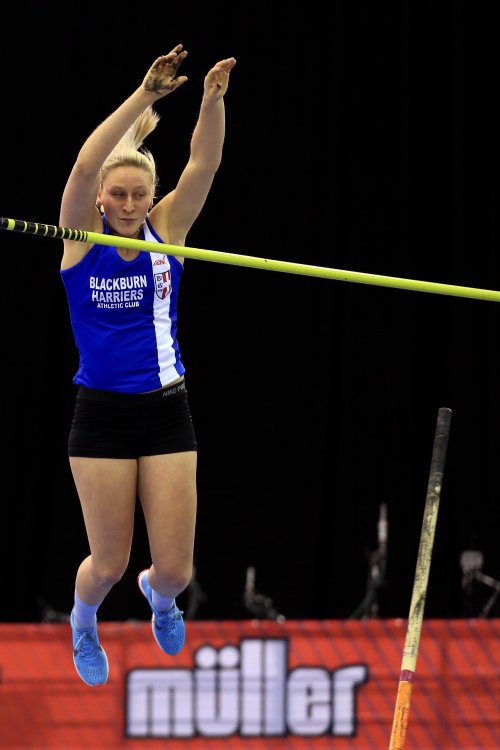 Holly Bradshaw, photo by Getty Images / British Athletics
Holly Bradshaw, photo by Getty Images / British Athletics
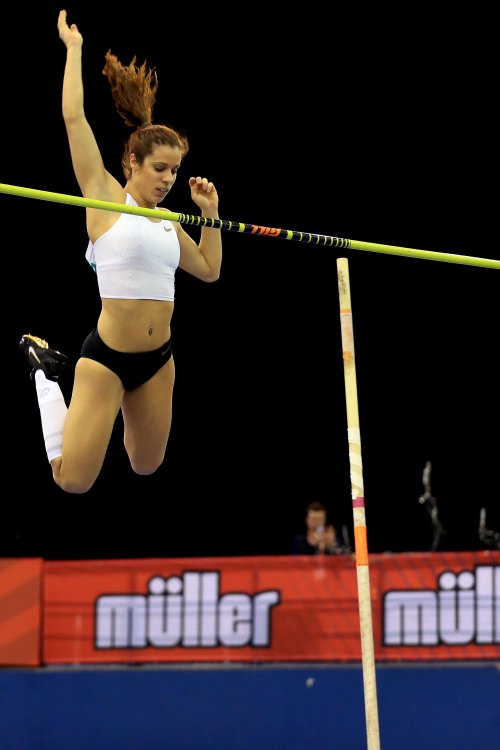 Katerina Stefanidi. photo by Getty Images / British Athletics
Katerina Stefanidi. photo by Getty Images / British Athletics
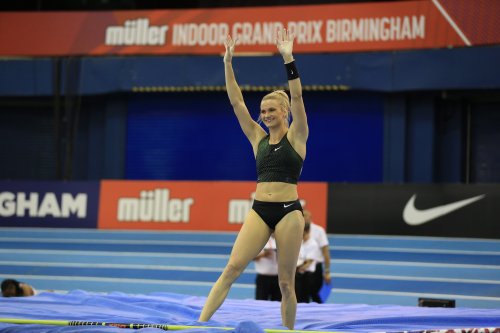 Katie Nageotte. photo by Getty Images / British Athletics
Katie Nageotte. photo by Getty Images / British Athletics
This is a must read, as it discusses the challenges as a women athlete and a pole vaulter. Nice job, Stuart Weir!
Pole-vaulters’ journies
One of the most interesting things to emerge from the webinar* put on by English Athletics was how everyone’s journey is not the same.
Katerina Stefanidi explained how she had got into pole-vaulting at a very early age: “I started pole-vaulting at 10 years old, earlier than most girls. Remember it was only in 2000 when there was the first Olympic women’s pole-vault. For the next five years I broke world age group records – I think I still hold some of those. When I was 16 I broke the world under 18 record, 4.37m. Then things didn’t go great for the next six years. During that period I gained some weight and I like to bring that up because it’s something a lot of teenage girls go through and the way my obsession about it pushed me to become almost bulimic. Those years in Greece were very difficult when it came to dieting. Getting a scholarship to America and no longer feeling that I had someone ‘counting my bites’ helped. I was able slowly to lose weight. The improvement came through getting fitter and becoming better technically as well as controlling what I ate”.
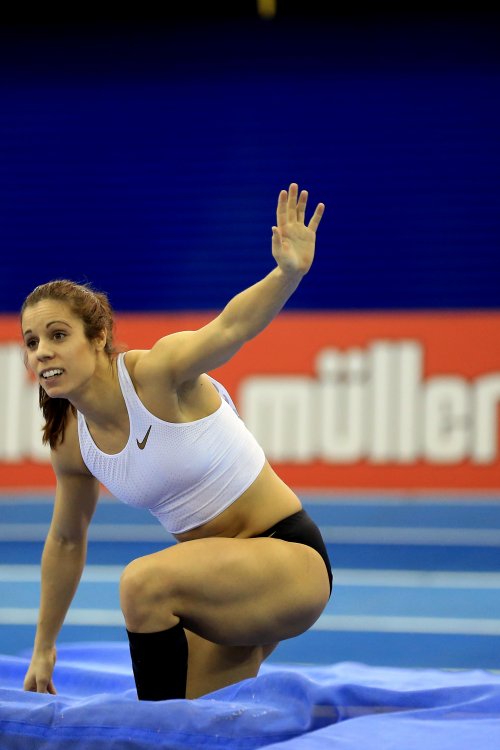 Katerina Stefanidi. photo by Getty Images / British Athletics
Katerina Stefanidi. photo by Getty Images / British Athletics
While Katerina was jumping 4 m at 14, Katie Nageotte did not achieve four meters until much later. “Starting in the US”, Katie explains, “was different from Kat’s experience in Greece. While she was ‘training’ I was going to a club twice a week more for fun, with much less intensity. I wasn’t learning to focus and try to do the same thing every time. I think my progression happened later because it developed as I grew. I wasn’t really hammering technique I was just running, throwing my hands up and having fun, not really knowing what I was doing. I jumped 4m in college but was going through a really hard mental block – partly because I never really learned to focus on the runway and control what I was doing. I would just run with a lot of speed not really knowing where I was – and it’s kind of scary when you jump like that because I didn’t feel I had much control over it. Then going to college and making a lot of changes, I felt I didn’t really know who I was as a vaulter and didn’t really trust anything.
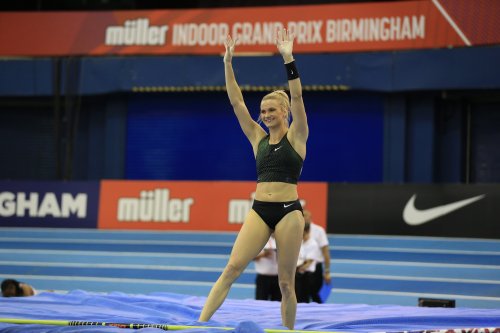 Katie Nageotte, photo by Getty Images / British Athletics
Katie Nageotte, photo by Getty Images / British Athletics
“I transferred schools in my junior year and went back to basics and found that confidence again, worked my way back to full approach and that’s when I had that big year. It kind of looks like it came out of nowhere but the potential was always there. I was just so afraid of it but I couldn’t force myself off the ground a lot of the time. I worked with a coach in Knoxville Tennessee for a few years and did well with him. It was the first time I was really away from home – because for college I was close to home – on my own and navigating with a new coach. I started to feel some of those insecurities creep in like when I had the bad mental block in college so I went home and was training with my college coach, using the Knoxville coach’s training program.
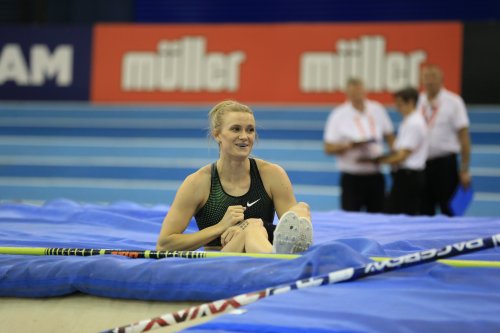 Katie Nageotte. photo by Getty Images / British Athletics
Katie Nageotte. photo by Getty Images / British Athletics
“I didn’t make the Olympic team in 2016, after having a good year, and that’s when I said, ‘OK, you can’t do this the way you’re doing it. There’s a lot that needs to improve in your jumps and you’re not going to make big improvements and changes in your comfort zone. So you need to go somewhere different’ and that’s when I reached out to Brad Walker (2007 World champion pole-vaulter, who is now her coach). And ever since that he’s been working on my mental game, also technically a lot but in order to make the changes I needed to become confident on the runway and confident in take-off. So it has been something of a whirlwind and I had a bit of a later start but I appreciate the journey because I tend to be a pretty anxious person. So having had that in the past enables me to deal with it a little bit better now”
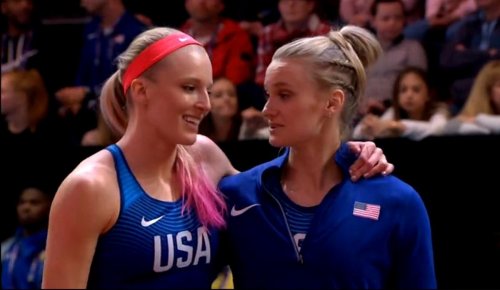 Sandi Morris and Katie Nageotte, 2018 WIC, photo by British Athletics
Sandi Morris and Katie Nageotte, 2018 WIC, photo by British Athletics
Holly Bradshaw described her journey: “I think I’d categorize my career in two different slots. I started when I was 16 and then 5 years later I was in a home Olympic games finishing sixth and winning medals (World Indoors, World Under 20s, European Indoors). It seems I couldn’t put a foot wrong. “
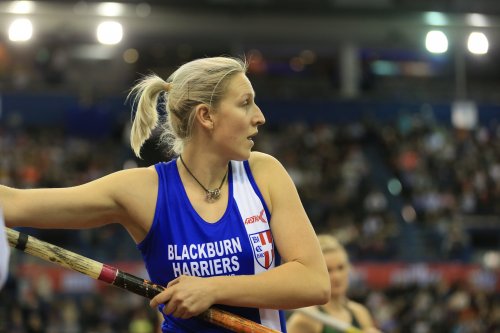 Holly Bradshaw, photo by Getty Images / British Athletics
Holly Bradshaw, photo by Getty Images / British Athletics
“Then in the years afterwards I was plagued with injuries. The only thing that I’ve experienced that’s been difficult in my career is the injuries. At one stage it seemed that every couple of months a different injury would come and I had surgery four years in a row. It was terrible and coming off those four years; it seemed never ending. Then finally I managed to get things back on track. Berlin (2018 European championship bronze) was a big breakthrough. I was very emotional because it meant so much to me particularly because of the injuries I’d only been able to come back for the outdoors on the back foot. Since then it has been going great. I haven’t had a significant injury for three or four years which builds confidence – confidence in my body and during the vault. It’s going in the right direction and I was hoping that 2020 was going to continuing going up but obviously not”.
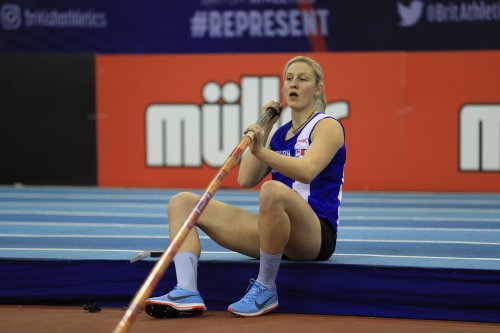 Holly Bradshaw, photo by Getty Images / British Athletics
Holly Bradshaw, photo by Getty Images / British Athletics
To compare the three, Katerina cleared 4 meters at 14, Holly when she was 18, Katie when she was 22. The point that webinar* moderator Scott Simpson, GB National Performance Institute Senior Coach, made from all this was that there is no one way to become an elite pole vaulter and that no matter where you are on the journey, you can make progress, develop and improve.
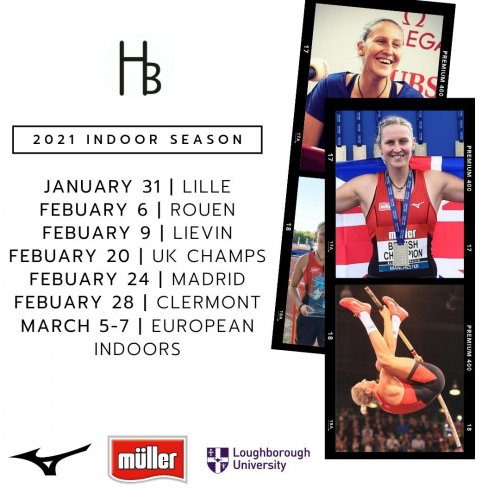 Holly Bradshaw, photo by Getty Images / British Athletics
Holly Bradshaw, photo by Getty Images / British Athletics
*Webinar put on by English Athletics, moderated by Scott Simpson, and featuring Katerina Stefanidi, Holly Bradshaw and Katie Nageotte. You can watch the webinar videos on https://athleticshub.co.uk
Author

Since 2015, Stuart Weir has written for RunBlogRun. He attends about 20 events a year including all most global championships and Diamond Leagues. He enjoys finding the quirky and obscure story.
View all posts




















